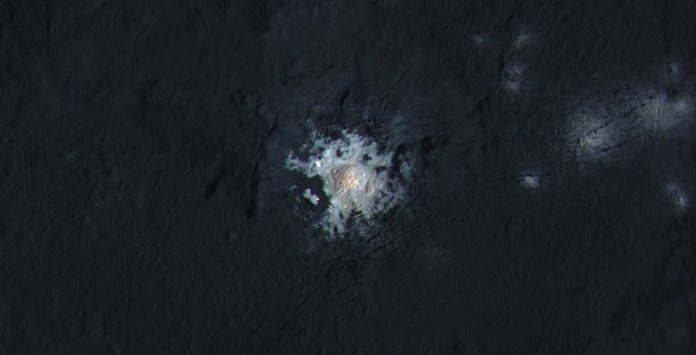
This year proves to be bright one for scientists working for the mission ‘Dawn’. The space craft has brought smiles, yet again.
Dawn, NASA’s mission to the dwarf planet Ceres, captured a bright spot in the planet in early 2015. Since then several researches are going on regarding this spot. According to the scientists, the bright central area in Occator Crater is approximately 30 million years younger than the crater. This spot is named as Cerealia Facula. This study, published in the Astronomical Journal , gives several stunning facts about the spot.
The bright feature on the dwarf planet is only about 4 million years old. This study also supports earlier interpretations, that is, this reflective material is made of carbonate salts. Although, this does not confirm a particular type of carbonate, previously identified, it boosts the confidence of the team’s approach. The study also reported about the secondary, smaller bright areas of Occator, called Vinalia Faculae. It read that, Vinalia Faculae consists of a mixture of carbonates and dark materials.

Creidts: NASA
The new evidence also suggests that the crater’s bright dome took several years to rise rather than forming in a single event. The researches believe that an initial trigger caused briny liquid to rise closer to the surface. Water, carbon dioxide and methane, came up and created a vent system. During this period, the bright material would have erupted through fractures, eventually forming the dome that is seen today.
This research is led by Andreas Nathues of Max Planck Institute for Solar System Research (MPS) in Gottingen, Germany. The team analyzed the data from two instruments on board Dawn – the framing camera and the visible and infrared mapping spectrometer.
Last month, it found evidences of organic materials on the dwarf planet. The spacecraft is currently on its way to a high-altitude orbit of 12,400 miles, and to a different orbital plane. Dawn will view Ceres in “opposition,” with the sun directly behind the spacecraft, in the late spring. NASA is expecting a lot more from Dawn this year.
























